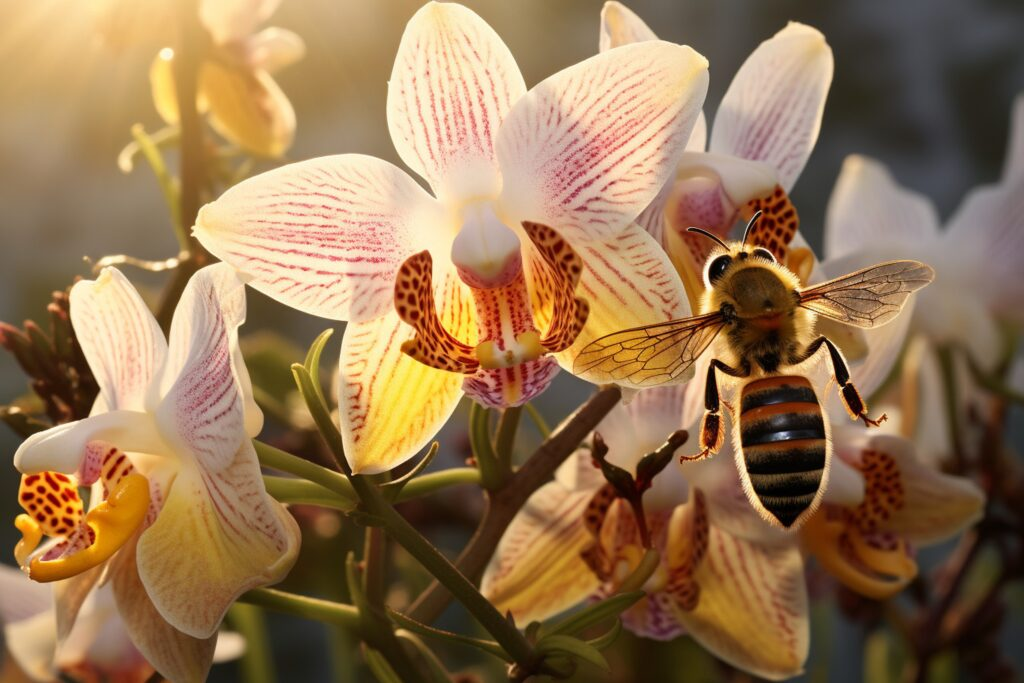Introduction
The Orchid Bee Euglossini is one of nature’s most striking insects, with vivid metallic colours and an extraordinary perfume-collecting courtship. From deep rainforests to Florida gardens, these bees play a vital role in pollinating orchids and other tropical plants.
1. Origins and Classification
- Belongs to the tribe Euglossini, within the family Apidae.
- About 200–250 species spread across Central and South America; a few have adapted to Florida.
- Five main genera: Euglossa, Eulaema, Eufriesea, Exaerete, and Aglae.
2. Brilliant Colours and Special Features
- Metallic Glow: Emerald green, blue, or purple exoskeletons make them appear like flying gems.
- Long Tongue: A proboscis sometimes longer than the bee’s body allows access to deep orchid flowers.
- Perfume Pouches: Males collect and store aromatic chemicals in their hind legs.
3. Remarkable Behaviour
- Fragrance Collection: Males seek orchid scents, tree resins, and other aroma sources.
- Courtship Displays: They release collected scents at “lek” perches to impress females.
- Pollination Power: Orchids like Coryanthes depend on them to transfer pollen, offering fragrance instead of nectar.
4. Role in the Ecosystem
- Critical pollinators for tropical forests and agricultural crops like Brazil nuts.
- Act as bio-indicators—declines may reveal habitat loss or ecosystem stress.
5. Notable Species
| Species | Unique Trait |
| Euglossa dilemma | Naturalised in Florida; loves basil and wood resins. |
| Eulaema meriana | Big, bold, and key to Brazil nut tree pollination. |
| Euglossa cordata | Strong flier covering over 50 km in search of fragrances. |
6. Conservation Outlook
Deforestation and pesticide use threaten orchid bees’ habitats. Some species adapt to urban settings, but many require intact tropical forests to survive and continue their pollination services.
FAQs:
Q1: Are orchid bees social like honeybees?
No. They are mostly solitary and do not build hives.
Q2: Why is fragrance important for males?
Perfume blends signal genetic quality to females, driving mate selection.
Q3: Where can I see orchid bees?
In Central and South American rainforests, and in certain parts of southern Florida.
Q4: Do they sting?
Females can sting if threatened, but males are harmless.
Q5: How can we protect them?
Preserve tropical habitats, plant native flowering species, and avoid pesticides.
Conclusion:
The Orchid Bee Euglossini is more than a colourful curiosity—it is a vital pollinator and a fascinating example of nature’s complexity. From their jewel-like appearance to their perfume-based mating rituals, these bees are key to rainforest health and the survival of many orchid species.







